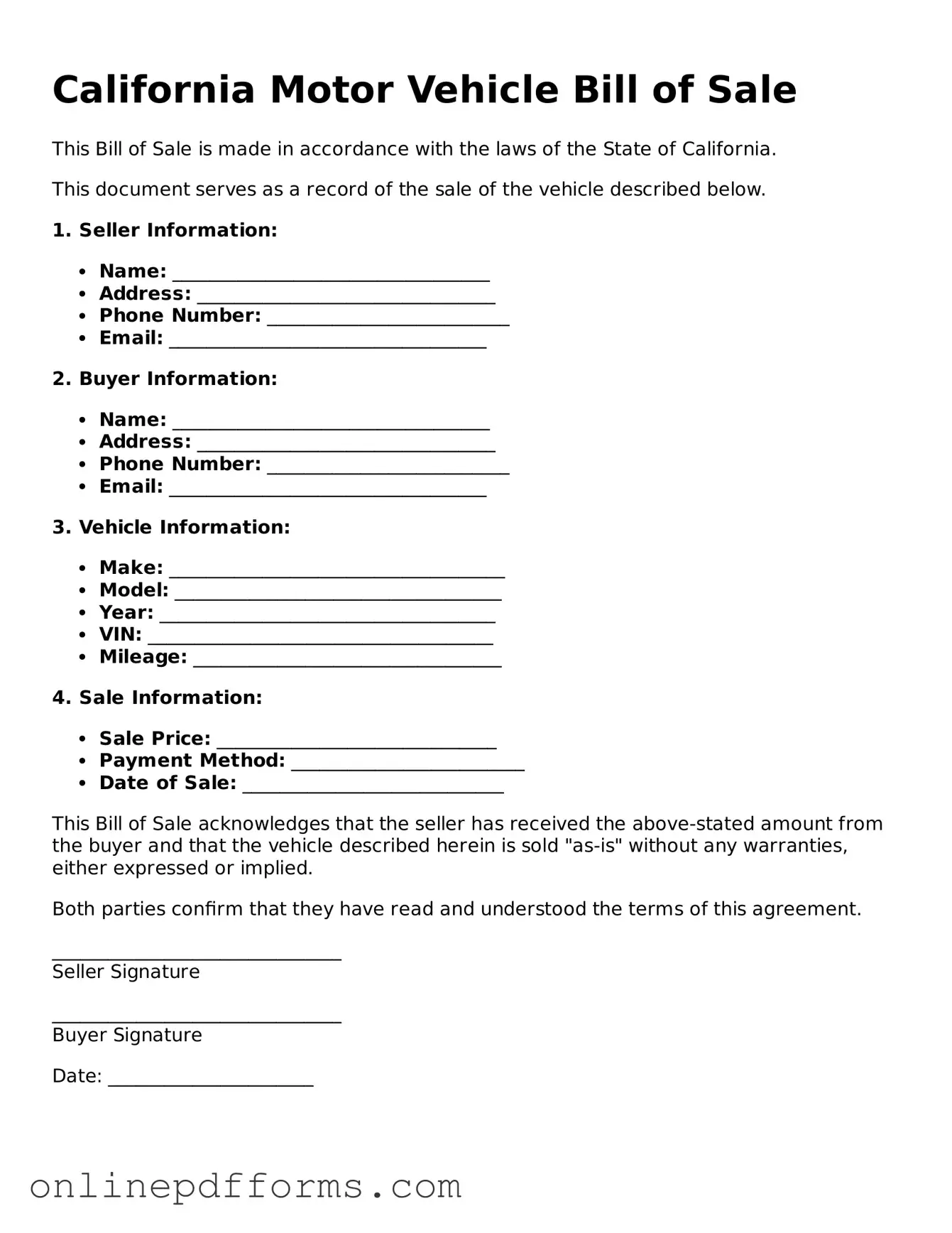The California Vehicle Registration Application is a document that shares similarities with the Motor Vehicle Bill of Sale. Both forms are crucial in the transfer of ownership process for vehicles. When you buy or sell a vehicle, the Bill of Sale serves as proof of the transaction, while the Registration Application is necessary for officially registering the vehicle under the new owner’s name. This application includes details about the vehicle, such as its make, model, and Vehicle Identification Number (VIN), ensuring that the state has accurate records of ownership. Together, these documents help facilitate a smooth transition of vehicle ownership and ensure compliance with state laws.
The Certificate of Title is another important document that resembles the Motor Vehicle Bill of Sale. While the Bill of Sale acts as a receipt for the transaction, the Certificate of Title serves as legal proof of ownership. When a vehicle is sold, the seller typically signs over the title to the buyer, which is then submitted to the Department of Motor Vehicles (DMV) for processing. Both documents contain essential information about the vehicle and the parties involved in the transaction, making them integral to the ownership transfer process. Without the title, the Bill of Sale alone may not suffice to establish legal ownership.
A Vehicle Transfer and Reassignment Form is also similar to the Motor Vehicle Bill of Sale. This form is often used when a vehicle is sold or transferred between parties. It includes sections for both the seller and buyer to provide their information, along with the vehicle’s details. The form not only serves as a Bill of Sale but also allows for the reassignment of the title, which is necessary for the new owner to register the vehicle. This document simplifies the process by combining elements of both the Bill of Sale and the title transfer, making it easier for individuals to complete their transactions efficiently.
Lastly, the Odometer Disclosure Statement is a document that complements the Motor Vehicle Bill of Sale, particularly in transactions involving used vehicles. This statement is required by federal law to ensure that buyers are informed about the vehicle’s mileage at the time of sale. It protects buyers from odometer fraud by requiring the seller to disclose the accurate mileage. While the Bill of Sale confirms the sale and outlines the terms, the Odometer Disclosure Statement focuses specifically on the vehicle’s mileage history. Together, they provide a comprehensive overview of the sale and safeguard the interests of both parties involved in the transaction.
